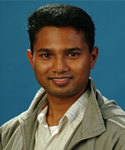| Biography | |
|---|---|
 Dr. Duleepa J Thrimawithana University of Auckland, New Zealand |
|
| Title: Wireless Electric Vehicle Charging: Past, Present and Future | |
| Abstract: Currently, there is a strong drive to electrify the transportation sector as a solution to the environmental and economic impacts of vehicles using internal combustion engines. However, to-date, limitations of battery technologies have hindered the uptake of electric vehicles (EVs). For example, the main drawbacks commonly associated with EVs are the limited range and long charging times, both of which are a direct result of the low energy and power densities of current battery technologies. These issues are further aggravated due to the fact that the EVs need to be plugged-in to refuel, as it can take many hours to fully-charge a depleted EV battery. Although, fast and extreme fast charging systems have been developed and deployed to help EV users refuel in a fraction of an hour, this is achieved at the expense of battery life and user safety. In contrast, wireless charging of stationary and in-motion electric vehicles promises a future where EVs are replenished organically, thus avoiding long charging times, range anxiety and battery degradation. An ubiquitous wireless charging infrastructure, especially one that is bi-directional, can be used to provide grid services, thus not only drastically improving the uptake of EVs, but also supporting grids with high penetration of renewable electricity. This keynote presentation will start with a brief discussion on the history of wireless power transfer (WPT) technology. Subsequently, the fundamental operating principles of a wireless EV charger will be presented, and commonly used wireless charging solutions will be reviewed. This will be followed by a discussion on some of the unique technologies developed by the WPT research group at the University of Auckland, highlighting their key features and benefits. To conclude the presentation, our vision for a ubiquitous wireless charging infrastructure will presented along with key research questions that needs to be addressed to make this vision a reality. | |
| Biography: Duleepa J Thrimawithana received his BE in Electrical Engineering (with First Class Honors) in 2005 and his Ph.D. in Power Electronics in 2009 from The University of Auckland, Auckland, New Zealand. From 2005 to 2008, he worked in collaboration with Tru-Test Ltd. in Auckland as a Research Engineer in the areas of power converters and high-voltage pulse generator design. He joined the Department of Electrical and Computer Engineering at The University of Auckland in 2009 where he currently works as a Senior Lecturer. He has co-authored over 100 international journal and conference publications and holds 16 patent families on wireless power transfer technologies. In recognition of his outstanding contributions to engineering as an early carrier researcher, Duleepa received the Jim and Hazel D. Lord Fellowship in 2014. His main research areas include wireless power transfer, power electronics and renewable energy. | |
